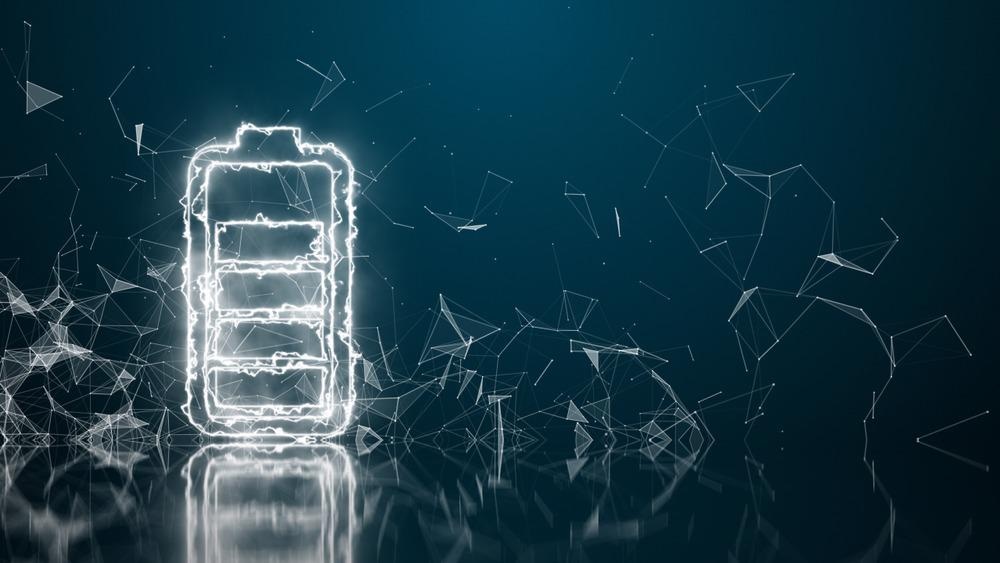.jpg) By Susha Cheriyedath, M.Sc.Reviewed by Skyla BailyDec 6 2021
By Susha Cheriyedath, M.Sc.Reviewed by Skyla BailyDec 6 2021A study recently published in the journal Green Energy & Environment proposed heptafluorobutyric anhydride (HFA) as a multi-functional electrolyte additive to enhance lithium metal batteries (LMBs) and verified its electrochemical properties.

Study: Powerful qua-functional electrolyte additive for lithium metal batteries. Image Credit: Immersion Imagery/Shutterstock.com
Electrolyte Additives for Lithium Metal Batteries
LMBs have gained a lot of attention from researchers due to their lowest electrochemical potential (−3.04 V vs standard hydrogen electrode) and high theoretical capacity (3860 mAh g−1). However, the formation of lithium dendrites during plating/stripping processes causes excessive electrolyte and active Li consumption and the puncture on the separator, which is a barrier to the commercialization of LMBs.
Also, several side reactions during the processes lead to low Coulombic efficiency (CE) and poor cycle life. Although the addition of electrolyte additives is an accessible and efficient solution to improve battery performance, finding an electrolyte additive with multiple functions that can resolve all the issues with LMBs is very difficult.
The Ma's group recently proposed HFA as a qua-functional electrolyte additive and validated its structure and electrochemical properties.
Functions of HFA
HFA has been shown to optimize electrode/electrolyte interphases and Li-ion flux/solvation simultaneously and has a more preferred reduction trend at the anode compared to the blank electrolyte. This is due to the lower energy values of the lowest unoccupied molecular orbital (LUMO) leading to the formation of a uniform and dense inorganic-rich solid electrolyte interphase (SEI). HFA’s high fluoride content generates LiF, which favors the conduction of Li ions in inner SEI and also forms a C-F-rich SEI surface that can facilitate Li-ion adsorption.
HFA helps the formation of a compact and thinner cathode electrolyte interphase (CEI) on the cathode side, which protects the active material structure and reduces the dissolution of transition metal ions. The increase in LiF content in CEI can improve fast Li-ion transportation.
Quebec’s Lithium Resources and Potential Markets for Electric Vehicle Batteries
HFA can also serve as the surfactant for the separator to help decrease the surface tension of the electrolyte and enhance the wettability of the separator to increase the Li-ion flux. The uniform Li-ion flux enables even Li deposition and the addition of HFA in the bulk electrolyte reduces the cumulative coordination number of the solvent molecules, which facilitates the desolation of Li-ion.
Observations of the Study
In the study, the addition of HFA led to a remarkable decline in the growth of Li dendrite. The Li anode surface cycled in the HFA electrolyte is smoother and neater without needle-like Li dendrites compared to that of blank electrolyte. Thus, the Li||Li symmetric cells with 1.0 wt% HFA steadily cycled for over 340 hours showed only mild polarization, while in the blank electrolyte the overpotential increases rapidly after 100 h.
The electrochemical impedance spectroscopy (EIS) results reveal that the HFA electrolyte had a lower impedance compared to the blank electrolyte. The cycling performance of Li||NCM622 full cells significantly improved after HFA addition and the capacity retention greatly increased after 250 cycles. Moreover, the transition metal ion concentration in the HFA electrolyte was much lower than that in the blank electrolyte, which shows that HFA can reduce the dissolution of transition metal ions.
To summarize, HFA, a qua-functional electrolyte additive, prevents the formation of Li dendrites, significantly decreases polarization even after cycling for over 340 h, and has relatively lower impedance than blank electrolytes. The work offers directions for characterizing multi-functional additives and inspires researchers to explore other such additives in the future.
Disclaimer: The views expressed here are those of the author expressed in their private capacity and do not necessarily represent the views of AZoM.com Limited T/A AZoNetwork the owner and operator of this website. This disclaimer forms part of the Terms and conditions of use of this website.
Source:
Dawei Su, Powerful qua-functional electrolyte additive for lithium metal batteries. Green Energy & Environment. 2021. https://www.sciencedirect.com/science/article/pii/S2468025721001734